Inflation is the yearly increase in the average price of goods and services within an economy. As prices rise, each unit of currency can purchase fewer goods and services. The Commodity Price Index (CPI) is used to calculate inflation rates and track prices annually. "Year-over-year change" is another commonly used expression, often used to show how much prices varied between two specific periods.
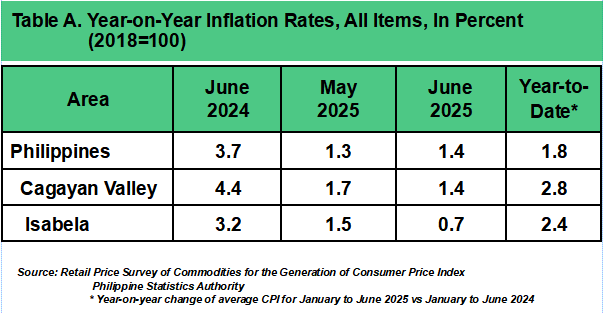
A. Isabela's Inflation Eases to 0.7 Percent in June 2025
The inflation rate in the Province of Isabela declined to 0.7 percent in June 2025, down from 1.5 percent in the previous month. This downward trend similar to national and regional (Cagayan Valley Region) figures.
In comparison, the province recorded a significantly higher inflation rate of 3.2 percent in June 2024.
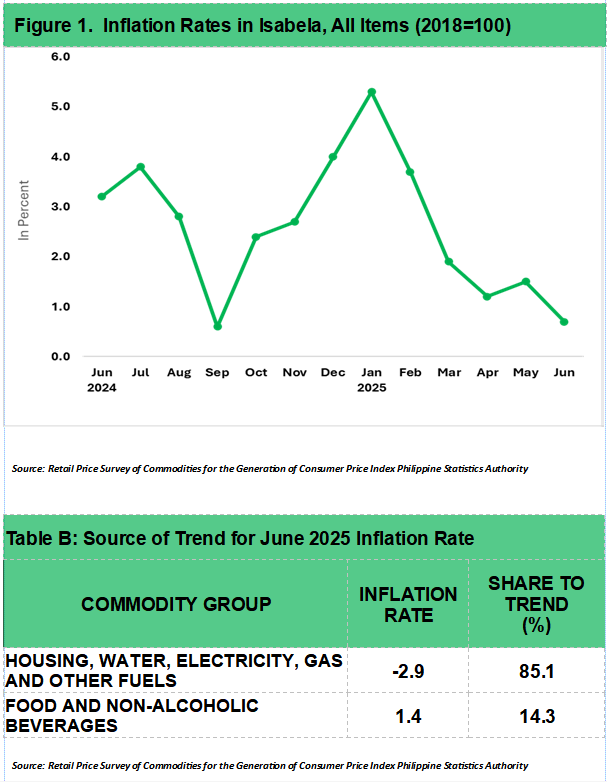
B. Source of Trend
The decrease in the indices of the following commodities was the primary driver of Isabela province's overall inflation trend:
Housing, Water, Electricity, Gas, and Other Fuels: The index for this group went down from 1.4 percent in May 2025 to –2.9 percent in June 2025, contributing 85.1 percent to the downtrend in provincial inflation. Within this category, the electricity index was the main factor, decreasing from 5.0 percent in May to –15.2 percent in June.
Food and non-alcoholic beverages: the index for this commodity group decreased from 1.7 percent in May 2025 to 1.4 percent this month contributing 14.3 percent to the provincial trend. Within this group, the index of Vegetables, tubers, plantains, cooking bananas and
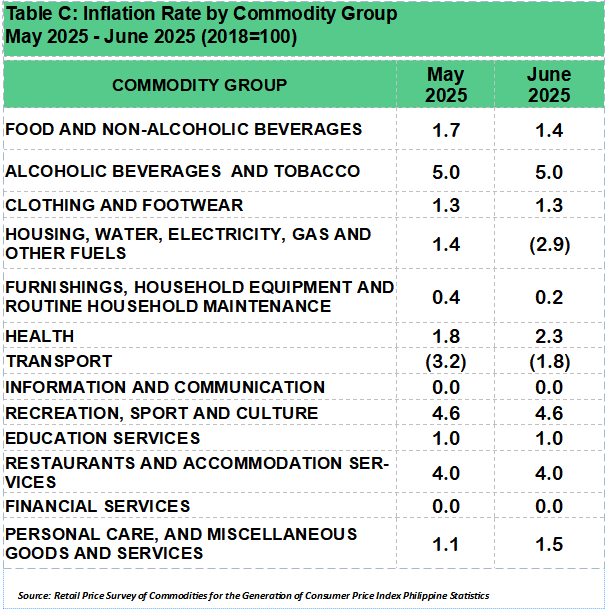
pulses was the main factor, decreasing from 12.7 percent to 5.0 percent.
Furthermore, indices for furnishings, household equipment and routine household maintenance decreased from 0.4 percent in may 2025 to 0.2 percent this month.
However, annual growth rates in the indices of the following commodity groups increased from May to June 2025:
· Health: Increased from 1.8 percent to 2.3 percent.
· Transport: Increased from –3.2 percent to –1.8 percent.
· Personal care, and miscellaneous goods and services: increased from 1.1 percent to 1.5 percent.
The indices of the remaining commodity groups retained their previous month’s annual growth rates.
C. Main Contributors
The top contributors for the June 2025 overall inflation rate were the following:
a. Food and non-alcoholic beverages, 1.4 percent;
b. Restaurants and accommodation services, 4.0 percent; and,
c. Alcoholic beverages and tobacco, 5.0 percent.
D. Food Inflation
Between May and June 2025, food inflation in the province decreased from 1.7 percent to 1.4 percent. In June 2024, the rate of food inflation is 6.1 percent.
In June 2025, the decrease in food commodity inflation was significantly influenced by the downtrend in the indices of the following food commodities.
The ratio of vegetables, tubers, plantains, cooking bananas, and pulses especially cabbages went down from 12.7 percent to 5 percent. Ready-made food and other food products saw a decrease in percentage this month, going from 4.7 percent to
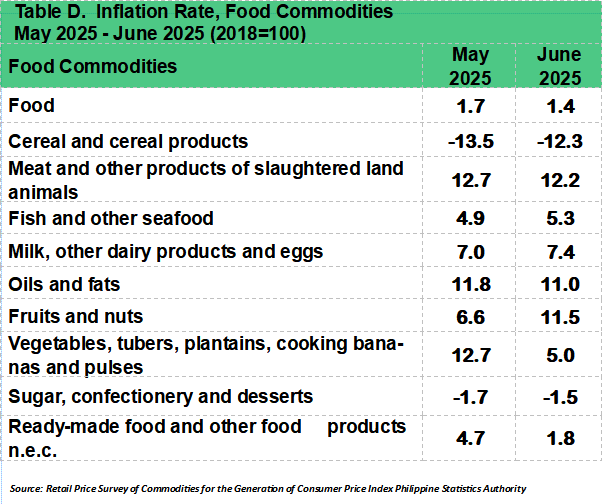
1.8 percent. Indices for meat and other parts of slaughtered land animals decreased from 12.7 percent to 12.2 percent.
Furthermore, decreased in the inflation rates of oils and fats was observed going from 11.8 percent to 11.0 percent.
On the other hand, upward inflation rates for the following food commodities were observed:
a. Cereals and cereal products; Increased from –13.5 percent to –12.3 percent.
b. Fish and other seafoods; Increased from 4.9 percent to 5.3 percent.
c. Milk, other dairy products and eggs; Increased from 7.0 percent to 7.4 percent.
d. Fruits and nuts; increased from 6.6 percent to 11.5 percent.
e. Sugar, confectionery and desserts; Increased from –1.7 percent to –1.5 percent.
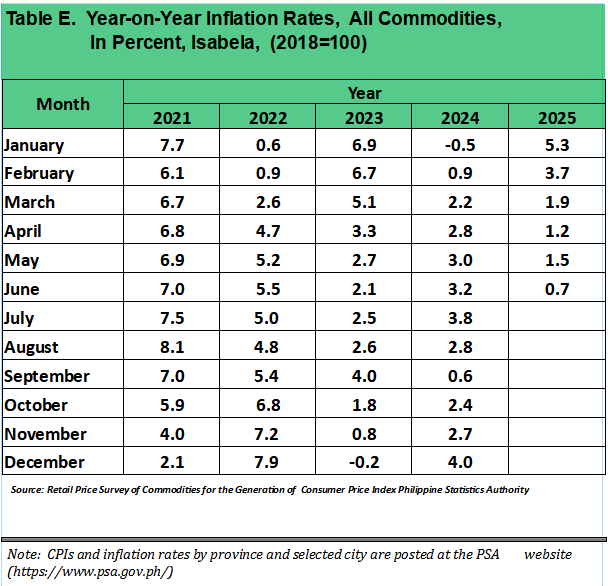
JULIUS M. EMPERADOR
Chief Statistical Specialist
/rbrjr
